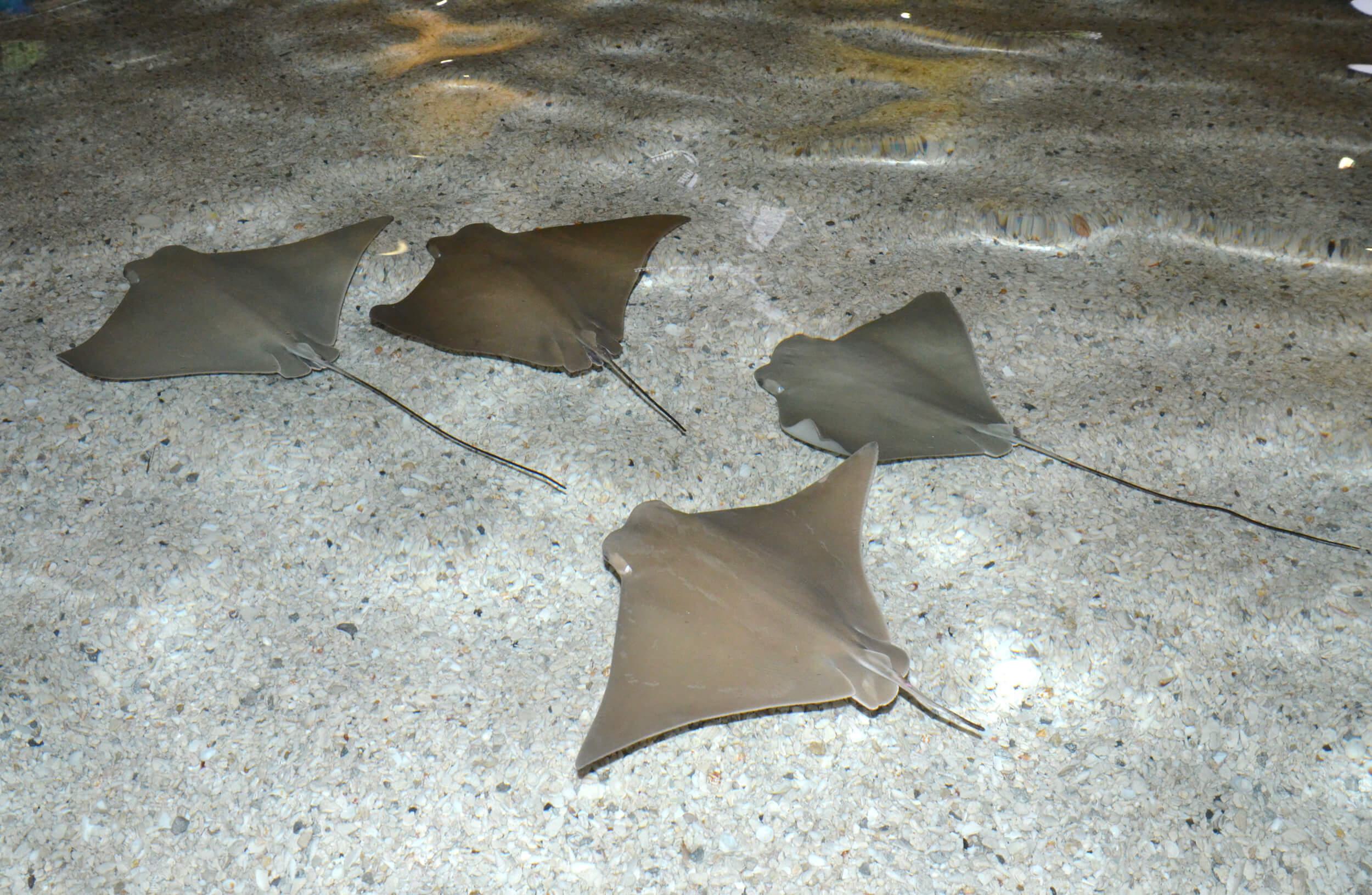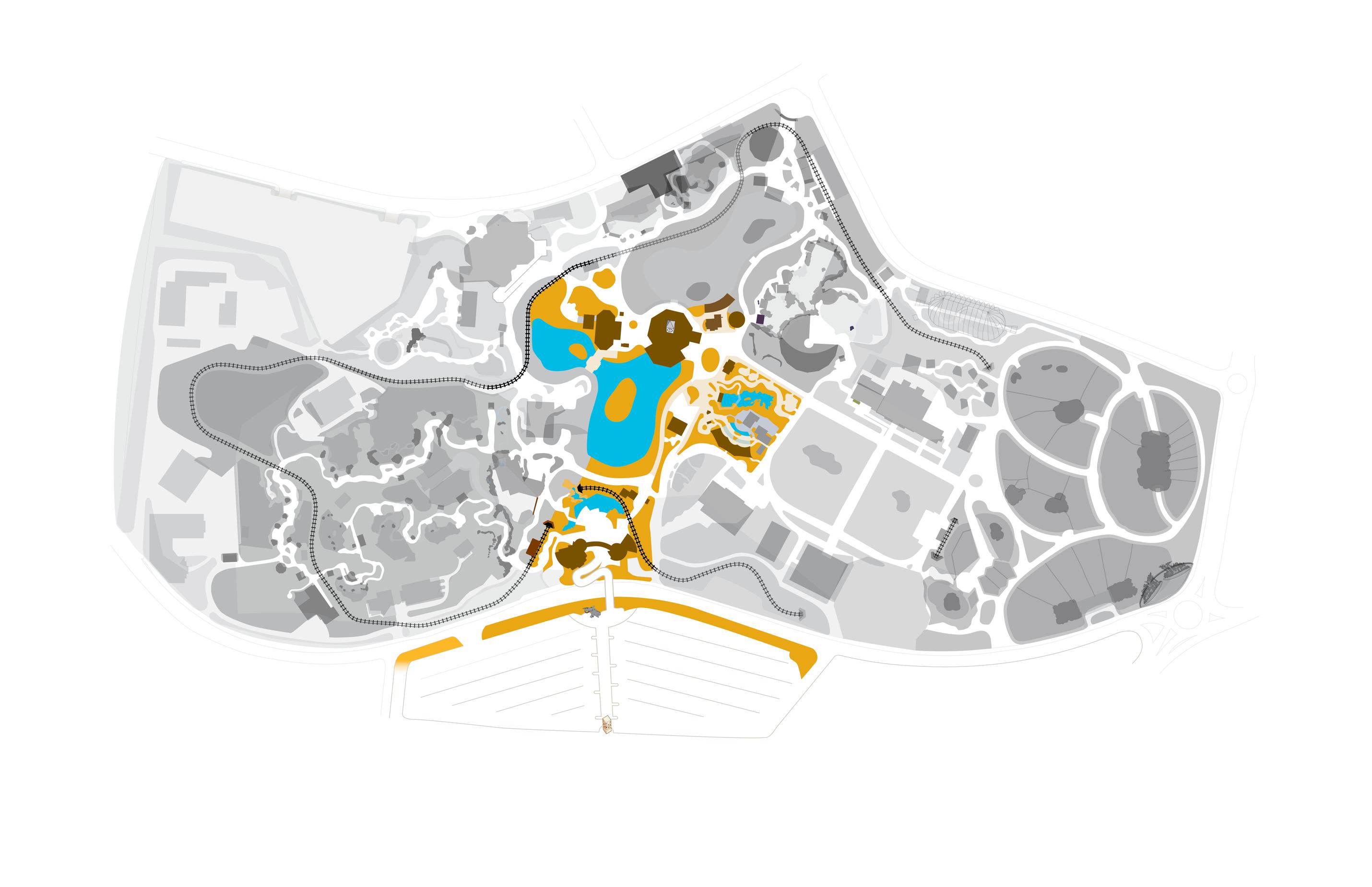
Cownose Stingray
Rhinoptera bonasus
Did you know?
- Cownose stingrays are part of the Rhinopteridae family, which they share with other rays.
- They live in many areas of the Atlantic Ocean.
- The migrate great distances, moving north in late spring and south in the fall.
- They are carnivores.
- They have dark coloration on top and light coloration on bottom.
Adaptations
Cownose rays use counter shading to camouflage. This means they have a light underside (to blend in with light coming down from the ocean's surface) and a dark top (to blend in against dark water when looking down from above). They have dramatic subrostral lobes that they use to shovel into sand in search of their next meal, often clams, oysters and small fish.
Young and Family
During breeding season, male cownose stingrays get sharper teeth to hold onto females' wings during copulation. Females are aplacental viviparous, which means they do not have placentas but they do give birth to live young. The young are born like miniature adults and are able to swim independently.
Threat Level
- Unknown
- Common
- Near Threatened
- Threatened
- Endangered
- Critically Endangered
- Extinct in the Wild
Threatened
The cownose stingray faces a risk of extinction in the wild.
Range
Areas in northern Atlantic Ocean to areas in southern Atlantic Ocean
Habitat
Open water
we care about cownose stingrays
We support cownose stingrays in the seasonal habitat Stingrays at Caribbean Cove at the Zoo. Learn more about how we are helping wildlife around the world.
Find this animal in Lakeside Crossing

SAINT LOUIS ZOO ZONE
Lakeside Crossing
Located in the center of the Zoo, Lakeside Crossing has a variety of food services, shopping destinations and a grassy plaza to rest and relax.

